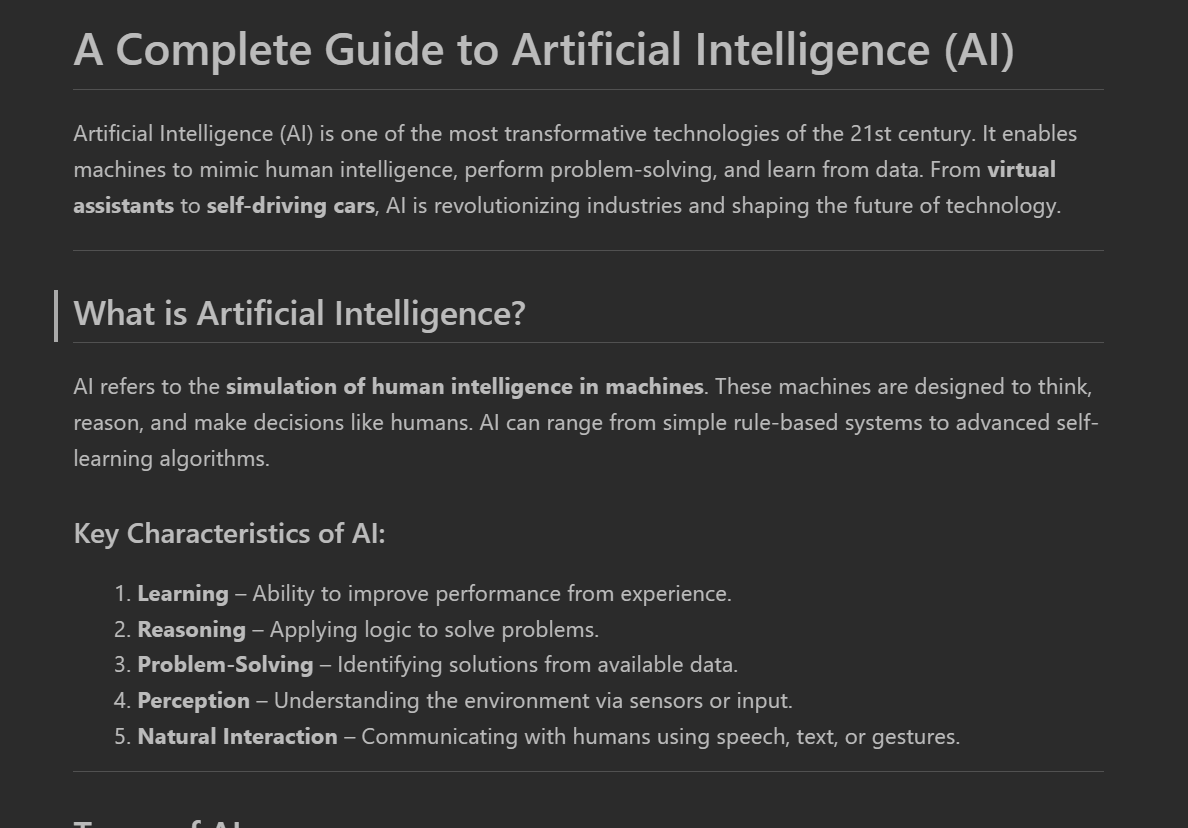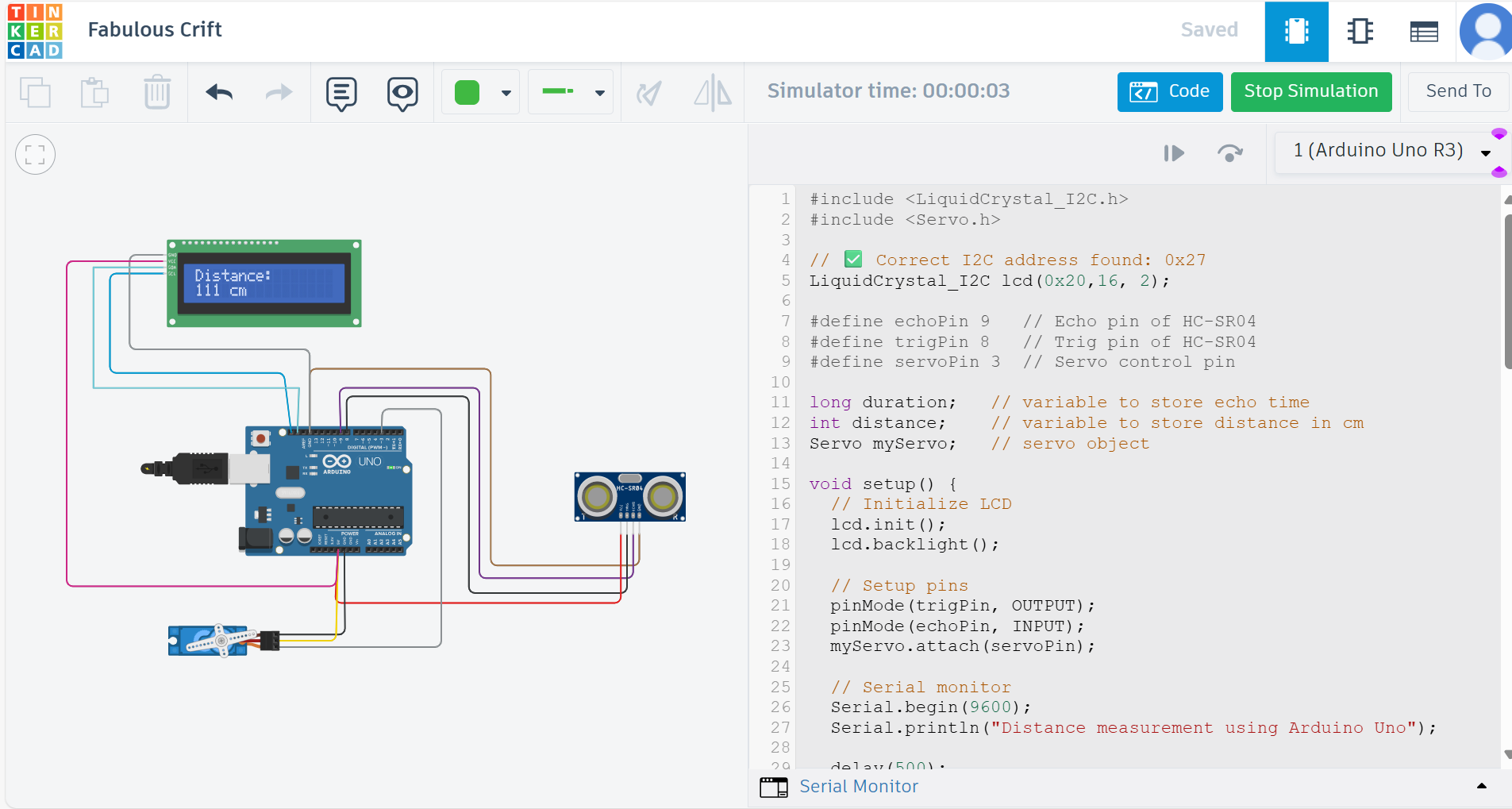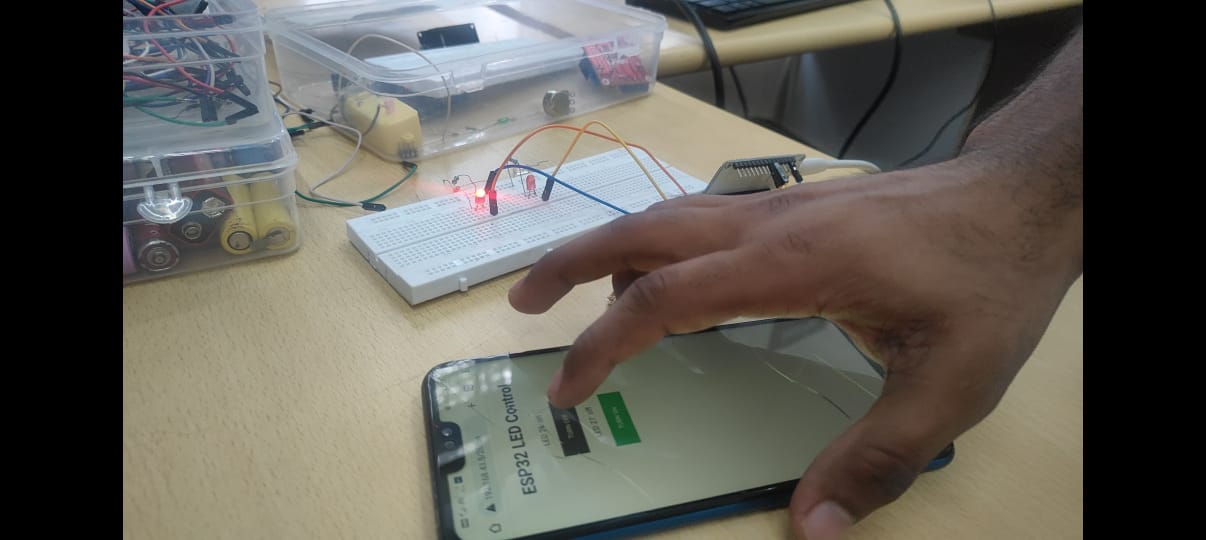
COURSEWORK
Priyanka's CL-CY-001 course work. Lv 1
| Priyanka | AUTHOR | ACTIVE |

Marvel Tasks Report
11 / 9 / 2025
MY EXPERIENCE:
It was a really interesting to learn and experience all the trending domains of technology. I was overwhelmed to learn new things, work on it and execute it in the lab physically.
Task 1: API
For this project, I created a simple, modern-looking weather application to demonstrate my understanding of APIs. I used the OpenWeatherMap API, a popular service that provides real-time weather data for locations worldwide. I obtained an API key from their developer platform to authenticate my requests. I designed a single-page user interface using HTML and CSS. The design is clean and responsive, featuring a search bar for city input and a card to display the weather information. I included placeholders for temperature, city name, humidity, wind speed, sunrise, and sunset, which are populated dynamically.
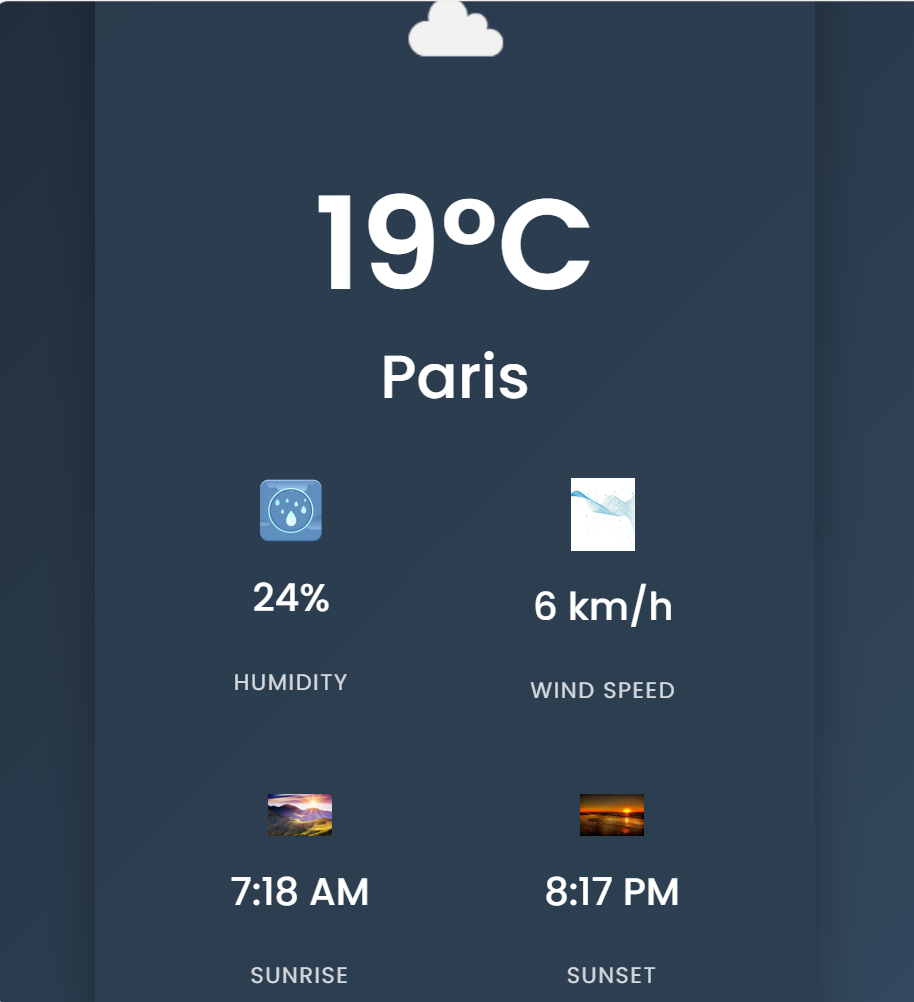
Task 2:
I checked out the given repository and worked with GitHub Actions to understand automated workflows. I created and managed issues to track tasks or problems, and also practiced making pull requests to suggest changes. This task helped you learn the complete GitHub workflow from identifying issues to contributing solutions through PRs.
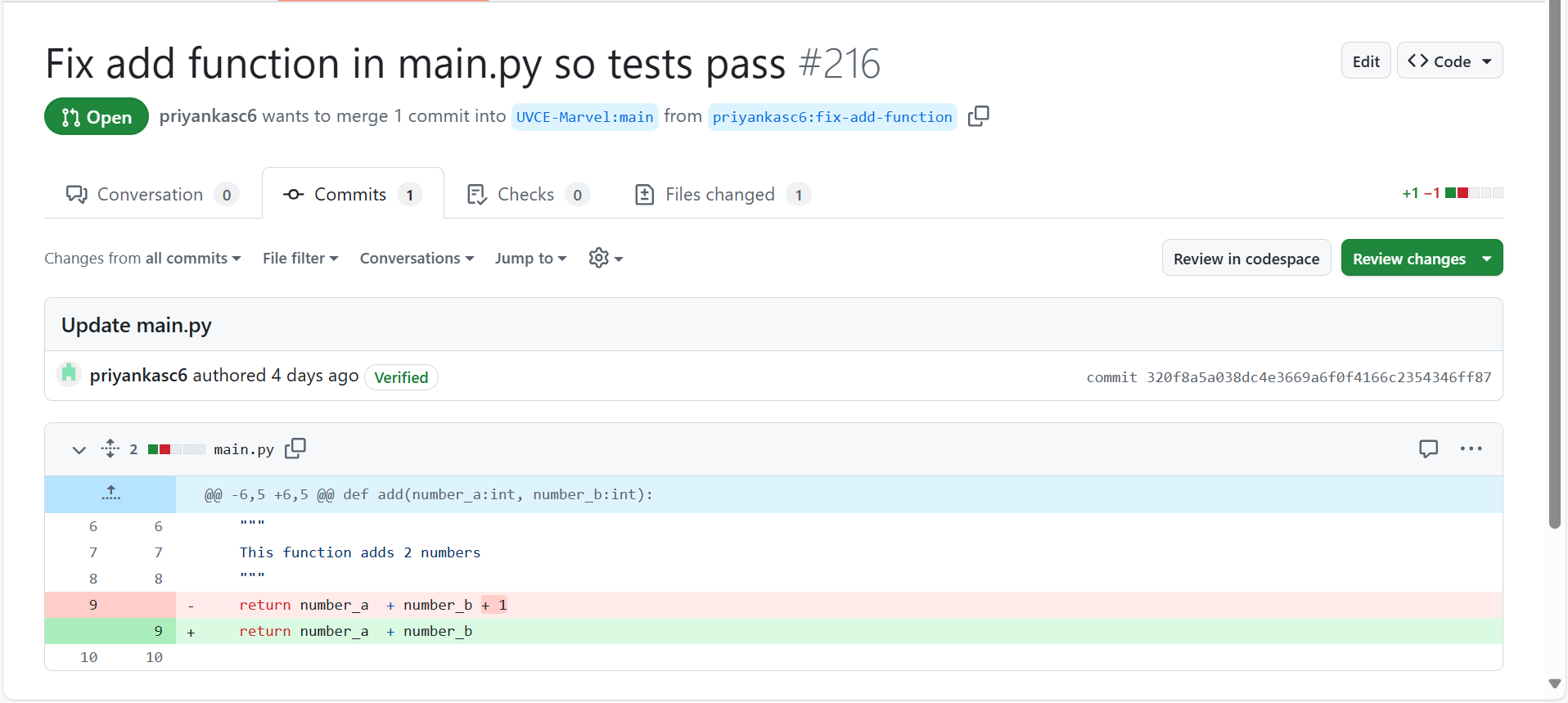

Task 3:Get familiar with the command line on ubuntu and do the following subtasks:
In this task, you practiced basic Linux command-line operations in Ubuntu. I created a new folder named test and navigated into it. Inside, I created a blank file without using any text editor and listed its contents. I then generated 2600 uniquely named folders (like M90, B56) using a loop. Finally, I concatenated two text files and displayed their combined content directly in the terminal.
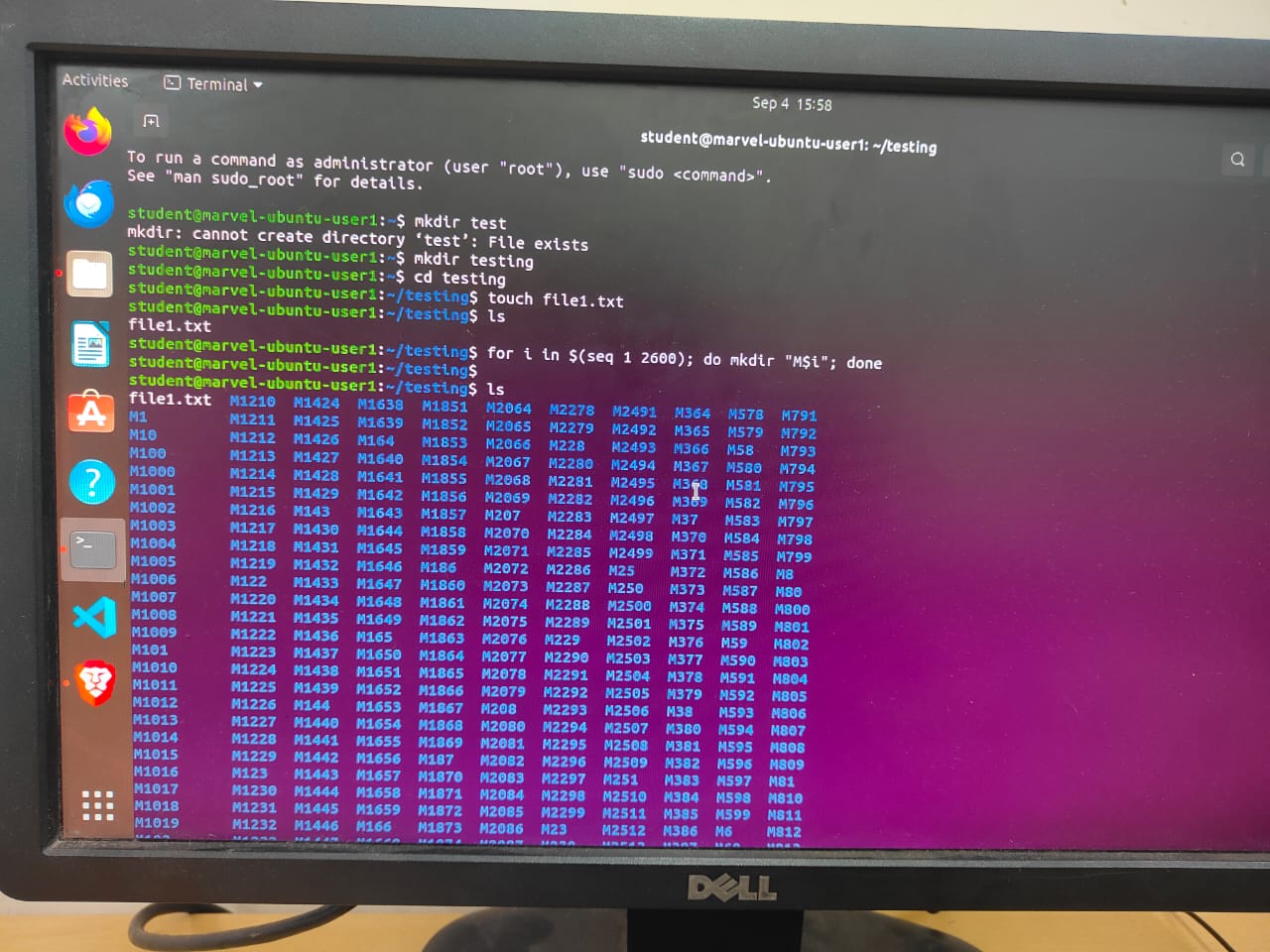
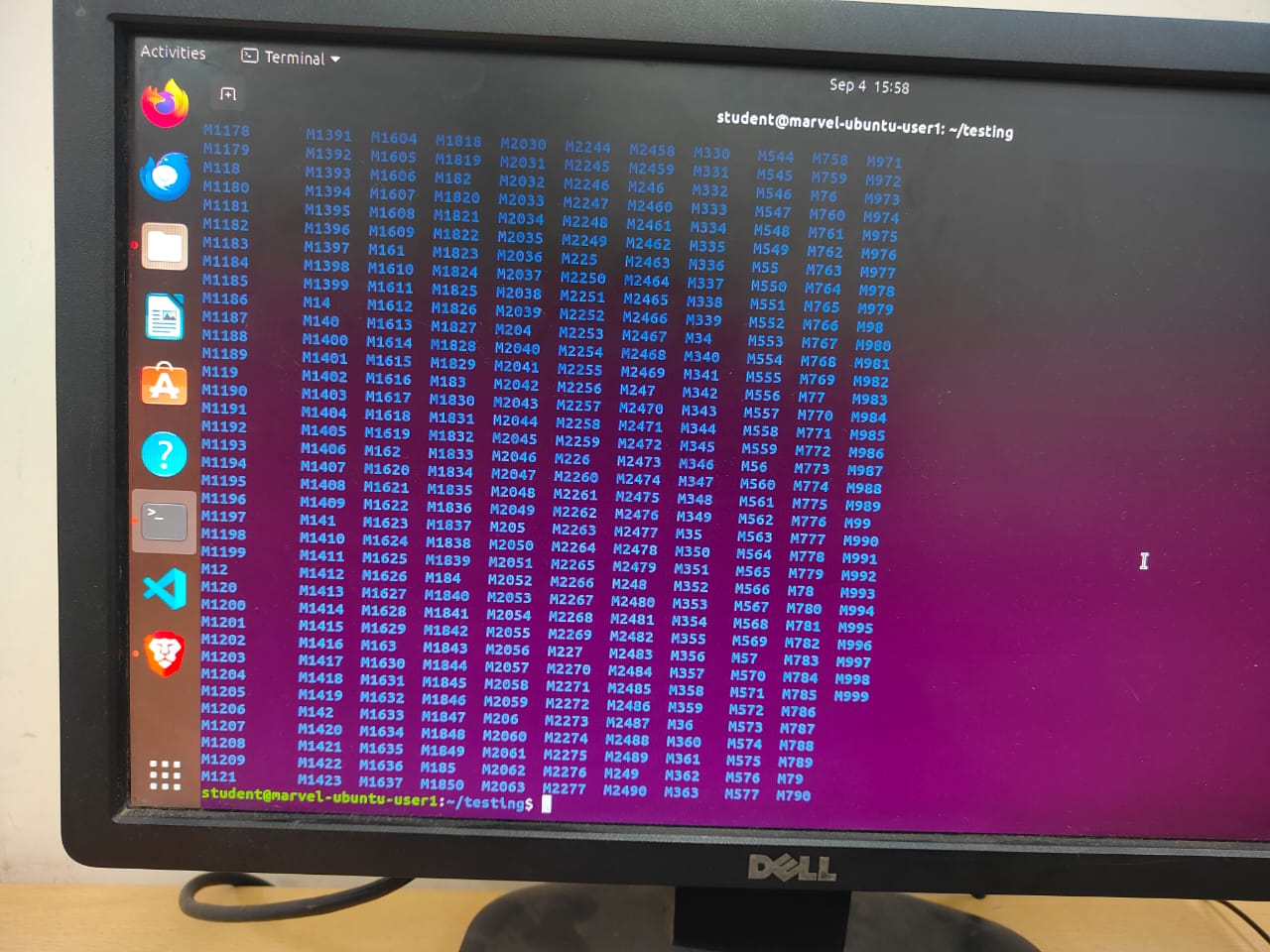
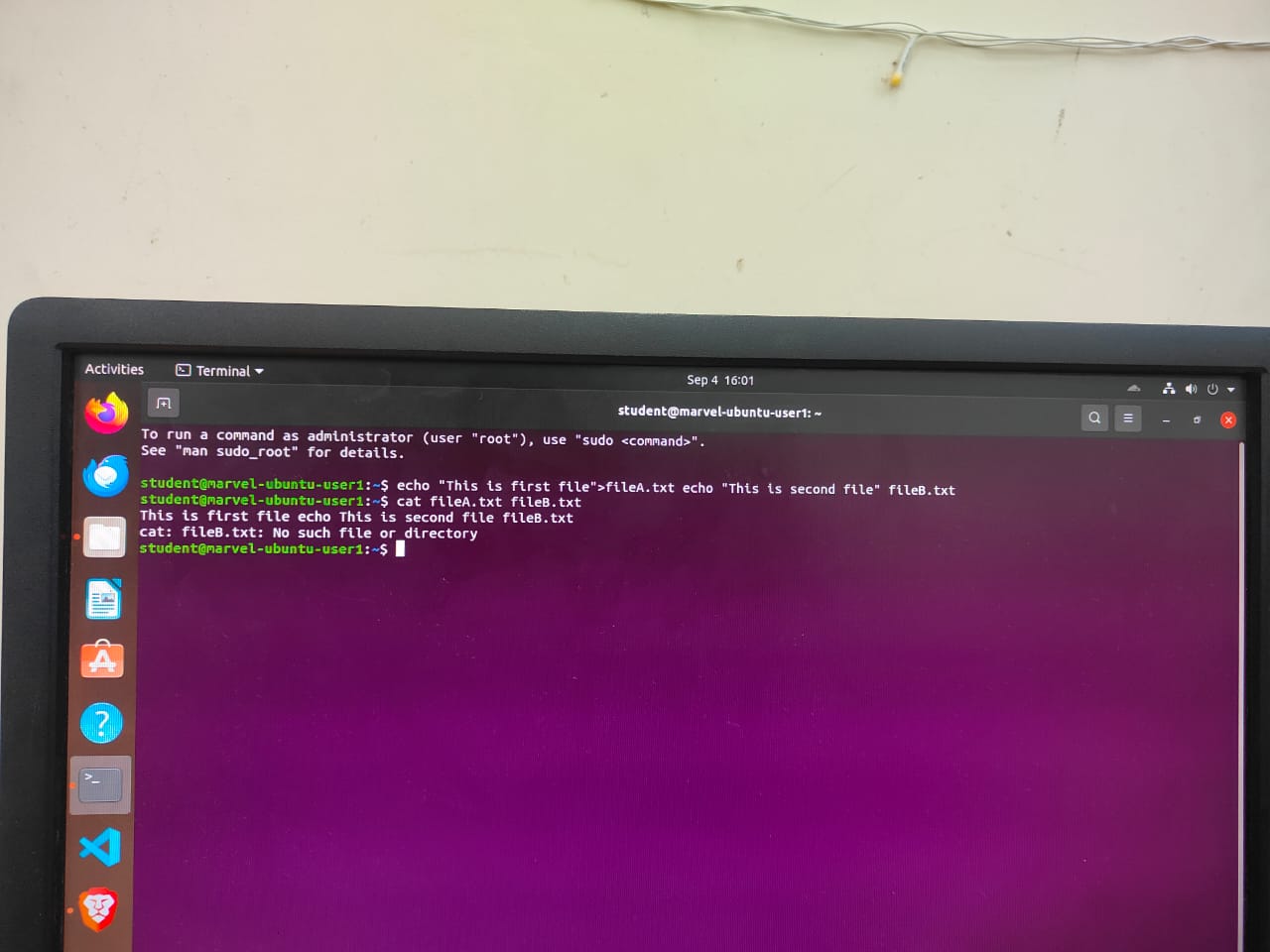
Task 4: Build Your Own Brain-Linear Regression from Scratch
Both the custom linear regression model and the Scikit-learn model produced nearly identical results. The regression lines almost overlap, with only minor differences in weight and bias values. Performance metrics (MSE, MAE, R²) are very close, showing that both models explain about 92.8% of the variance in the data. This confirms that the custom implementation is accurate and performs on par with Scikit-learn.
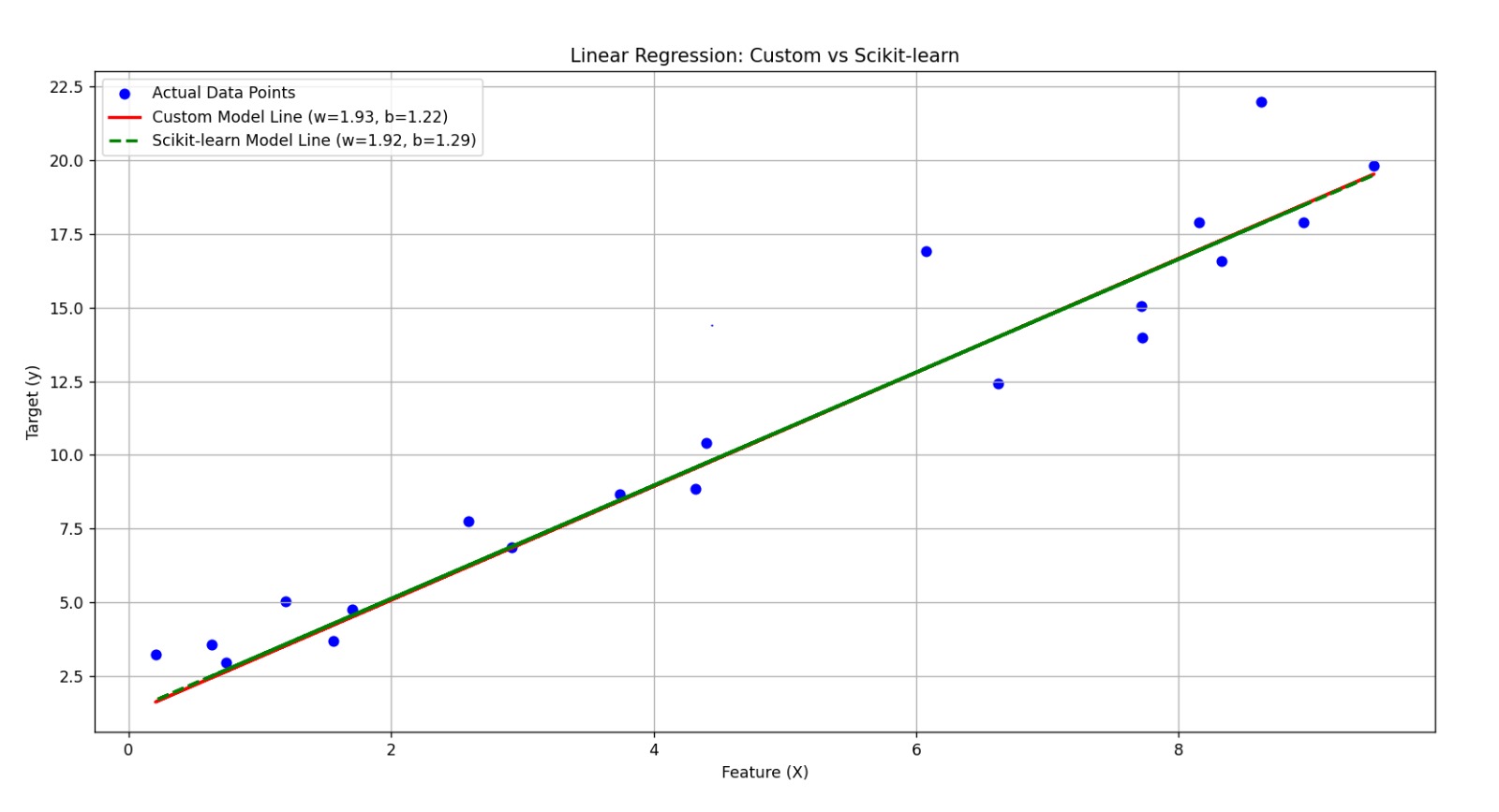
Task 5:The Matrix Puzzle —Decode with NumPy & Reveal the Image
In this task, i will be solving a visual puzzle using Python libraries like NumPy and Matplotlib. My main goal is to take a scrambled matrix from a provided link and decode it. This involves using NumPy functions to reshape the matrix into a square, correct its orientation by transposing or flipping it, and then finally visualize the result. By plotting the decoded matrix with matplotlib.pyplot.imshow(), i will reveal a hidden image, gaining practical experience with essential data manipulation and visualization techniques.

Task 6: Create a Portfolio Webpage
I have successfully created a portfolio webpage using HTML for its structure and CSS for its design. I organized the content into distinct sections, including a brief "About Me," a showcase of my "Projects," my personal "Interests," and links to my "Social Media" profiles. To ensure the website is accessible on any device, I used CSS techniques to make it fully responsive. Finally, I pushed my entire project to a Git repository.
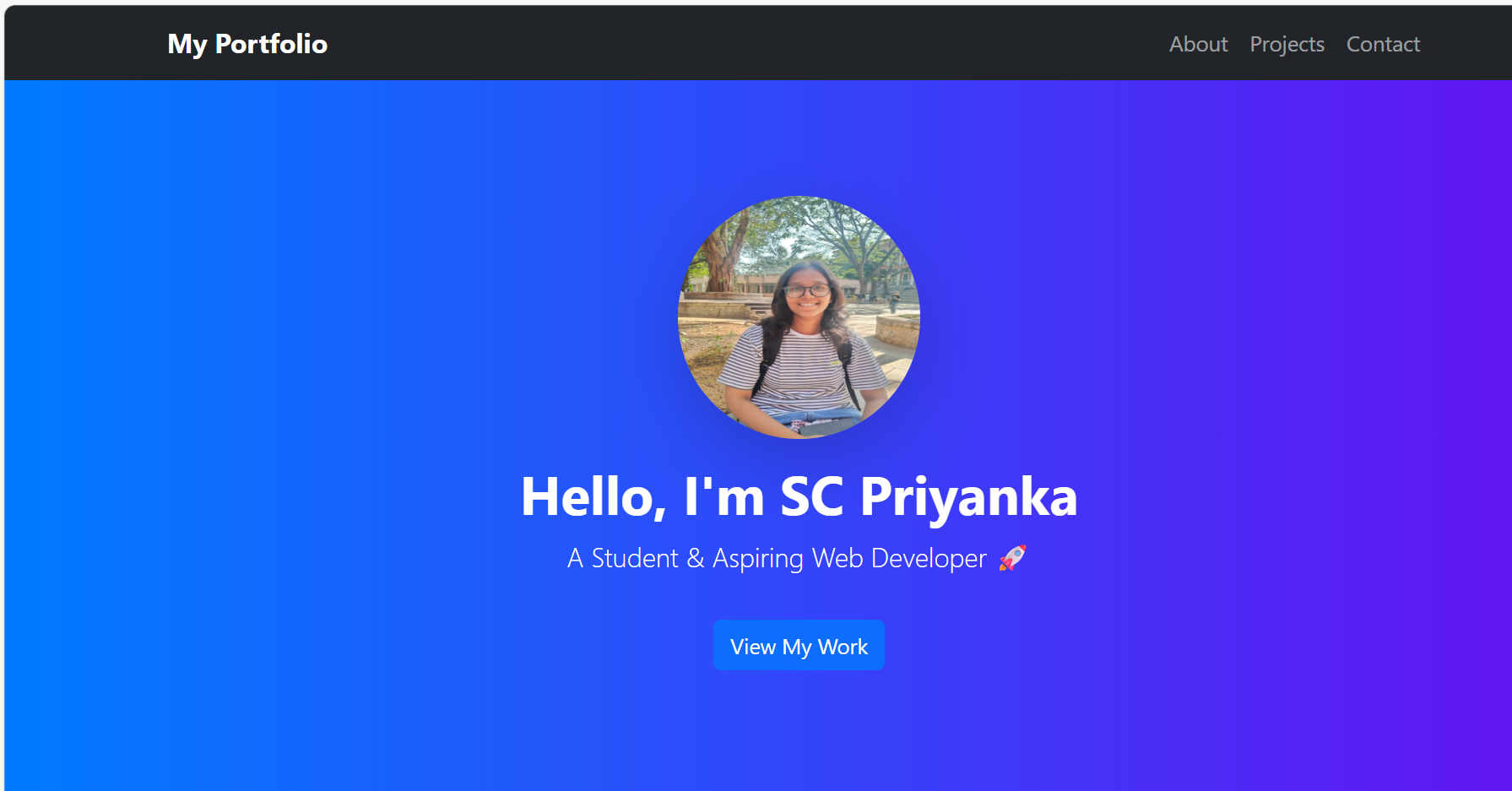
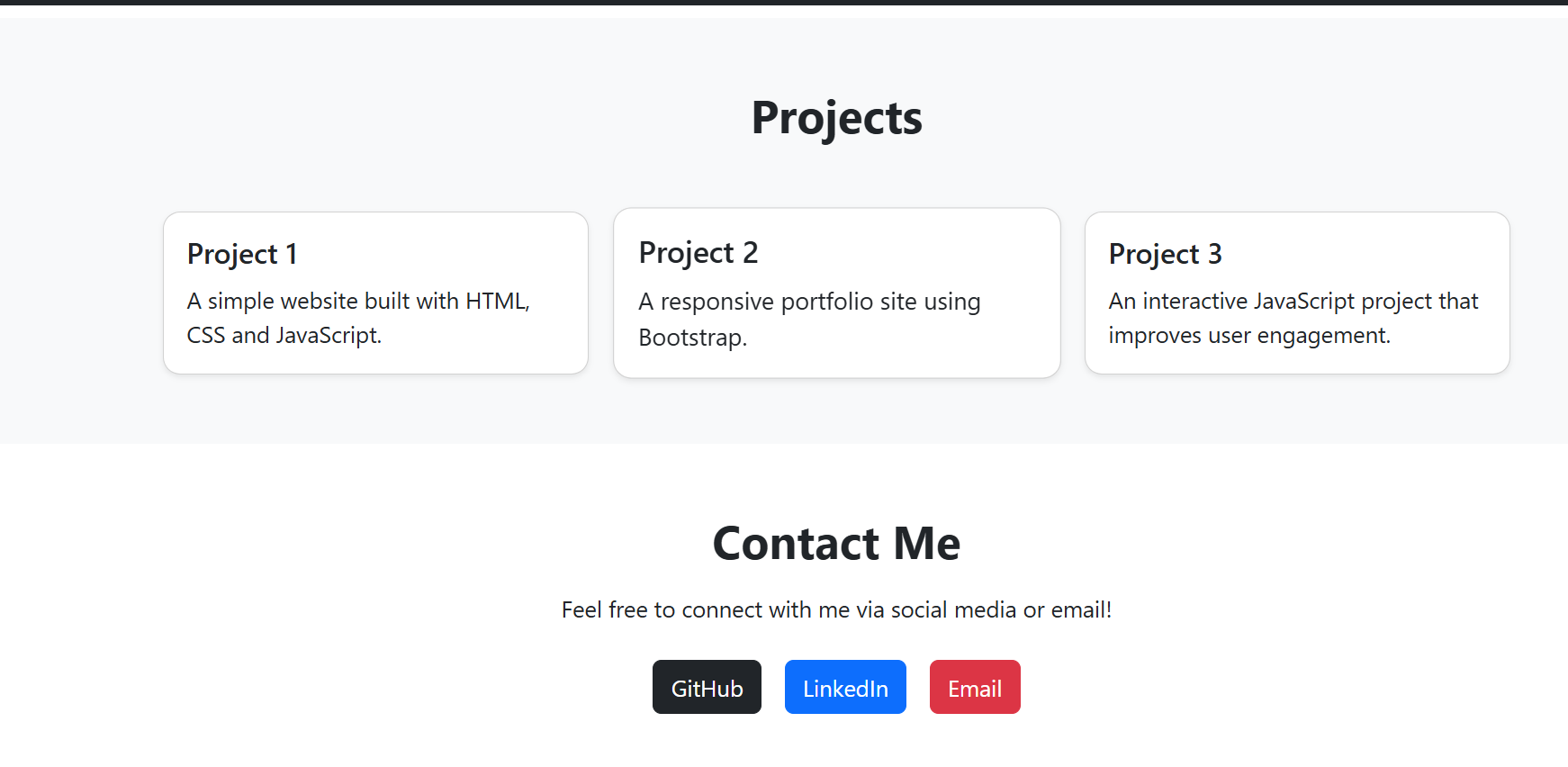
Task 7: Tinkercad
I have successfully completed a task in Tinkercad, demonstrating proficiency in circuit design, embedded programming, and system simulation. The project was executed in two distinct phases:
First, I designed and simulated a basic distance measurement system. This involved interfacing an ultrasonic sensor with an Arduino Uno, where the sensor's echo and trigger pins were connected to dedicated digital pins on the microcontroller. I wrote and uploaded a custom Arduino program to calculate the distance to an obstacle by measuring the time-of-flight of sound waves. The results were then displayed on the serial monitor, confirming a successful measurement.
Building on this foundation, I developed a more advanced radar system. This required integrating a servo motor with the ultrasonic sensor to automate its movement. By programming the servo to sweep through a range of angles, the system could detect objects across a wider area. I utilized the LiquidCrystal_I2C and Servo libraries to control an LCD display, which provided real-time feedback on the detected distance (as shown in the simulation at 111 cm). This task not only enhanced my understanding of component functionality but also provided hands-on experience in building a mechatronics system with practical applications. The final outcome showcases a functional and effective radar mechanism.
Task 8: Soldering Prerequisites
Under the direct supervision of a coordinator, I performed basic soldering on a perf board. My project involved creating a simple LED circuit, where I learned to tin the iron, apply solder with the correct technique, and use the soldering wick to correct any accidental solder bridges. The task provided valuable hands-on experience in achieving clean, shiny solder joints, solidifying my understanding of both the tools and the safety protocols necessary for successful circuit assembly.
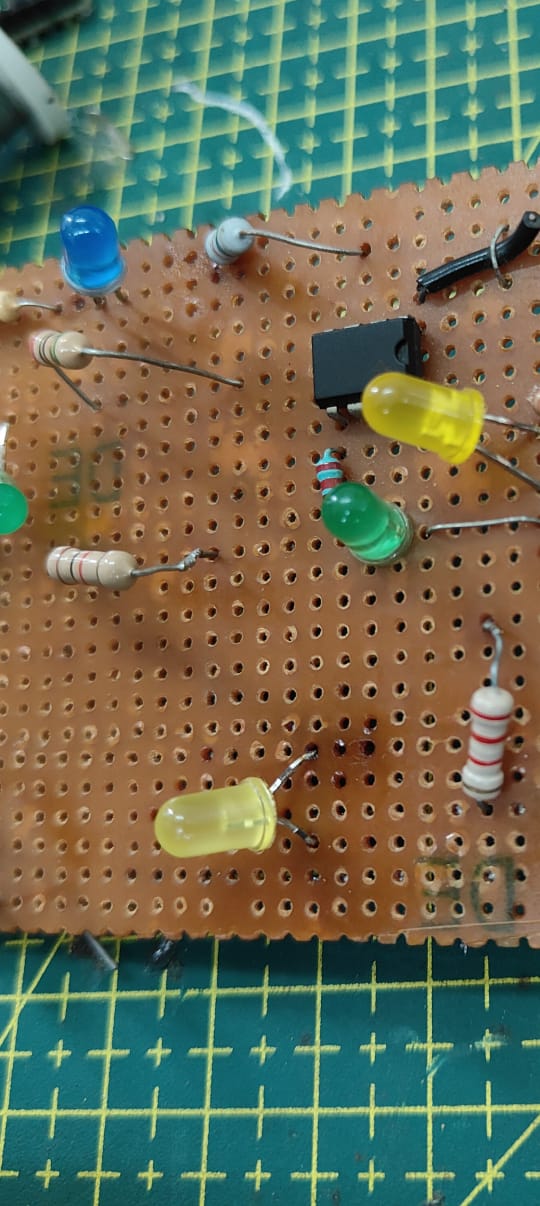
Task 9:Design a 555 astable multivibrator with duty cycle 60%, rig up the circuit on a breadboard and by using the probes observe the output of your circuit on the DSO.
In this task three 5-kilo-ohm resistors used in the original design in its internal voltage divider network. 555 timer IC produces continuous square wave or pulse wave output, commonly used for generating clock signals and time keeping in digital circuits. This makes it useful for generating clock pulses, tone generation, and various timing applications. Also an oscilloscope is used to visualize electrical signal as they vary over time.
#Task 10: LED Toggle Using ESP32
This task involves creating a standalone web server using an ESP32 microcontroller. The primary goal is to learn how the ESP32 functions as both a microcontroller and a Wi-Fi module. You will program the ESP32 using the Arduino IDE to create a simple web page that allows you to remotely control an LED connected to one of its GPIO pins, thereby demonstrating a fundamental IoT (Internet of Things) application.
Components Used:
ESP32 Microcontroller: The main component, providing both processing and Wi-Fi capabilities.
LED: The output device that you will control.
Current-Limiting Resistor: Essential for protecting the LED from excessive current.
Breadboard & Jumper Wires: For assembling the circuit without soldering.
Computer with Arduino IDE: The environment used to write and upload the code to the ESP32.
Task 11: Make a Web app
I have used the Express.js framework to build a resource library website. This application allows users to browse a collection of resources, such as articles and books. Additionally, I implemented a user management system, enabling visitors to create and manage their own accounts. The project demonstrates my ability to build a dynamic, backend-driven website with personalized user features.
.png)
.png)
.png)
.png)
Task 12:Introduction to VR
What is Virtual Reality?
Virtual reality (VR) is a technology that creates a computer-generated simulation of a three-dimensional environment, allowing users to interact with this environment as if they were physically present. This immersive experience is typically achieved through the use of head-mounted displays (HMDs), motion tracking sensors, and sometimes haptic feedback devices that simulate touch and other sensations. How Does VR Work? VR systems work by using computer modeling and simulation to generate realistic environments. Users wear VR headsets that display stereoscopic images, creating a sense of depth. Motion sensors track the user's movements, adjusting the visuals in real-time to maintain the illusion of being in a different space. This technology can engage multiple senses, including sight, sound, and touch, enhancing the immersive experience.
Difference between VR and AR
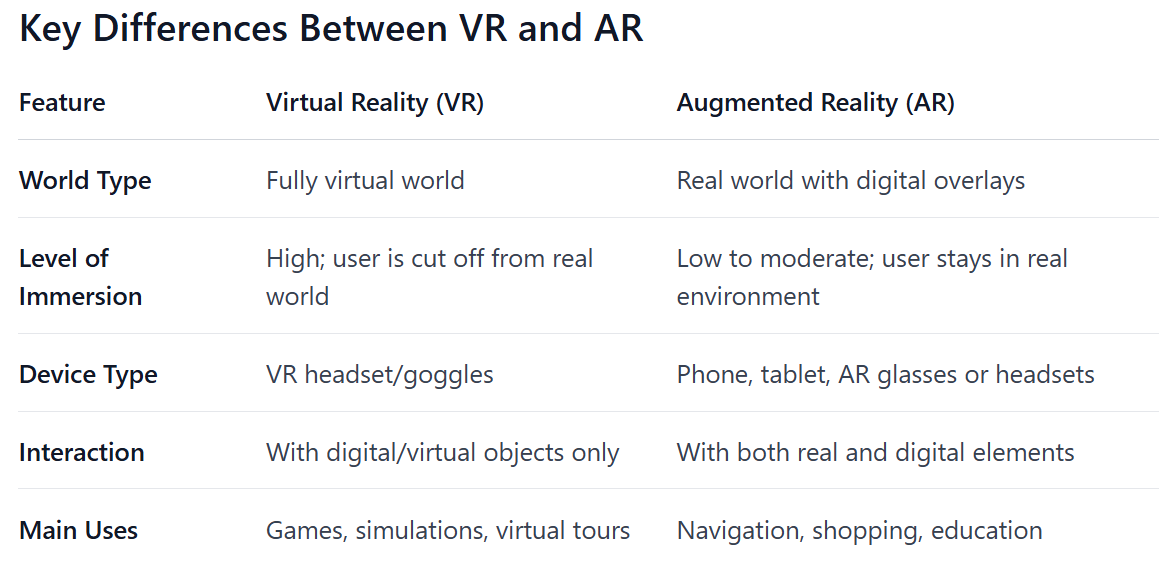
TRENDS IN SPACE AND TECHNOLOGY:
-
3D Printed Parts: Instead of building rocket parts piece by piece, engineers are now "printing" them using special 3D printers. This is faster, cheaper, and makes the parts lighter. This new method was already used on a rocket launch and is expected to become more common after more testing to make sure the parts are as strong as the old ones.
-
Reusable Rockets: Instead of throwing away rockets after each launch, companies like SpaceX are building them to land back on Earth so they can be used again. This is like a reusable airplane versus a one-time-use rocket. Making rockets reusable dramatically lowers the cost of space travel, but it requires a lot of testing to make sure they are safe after multiple trips.
-
Safer Rocket Fuel: Traditional rocket fuels are often dangerous for people handling them and bad for the environment if there's a problem. New types of "green" fuels are being developed that are safer and cleaner. There are also new electric-powered systems that are more efficient.
-
Artificial Intelligence (AI): AI is being used as a smart assistant in space. Since space is so vast, AI can help satellites avoid crashing into each other, quickly analyze huge amounts of data from space, and even control rovers on other planets when it takes too long for commands to get there from Earth.
-
Tiny Technology (Nanotechnology): To save money, engineers are making satellites and their parts much, much smaller. Think of tiny microchips and sensors. This is important because the heavier a rocket's payload, the more it costs to launch.
Top 5 Private Space Companies in India Listed in Stock Market
-
Apollo Micro Systems Ltd- Specialises in high-precision electronic systems for aerospace and defence that support satellite and launch vehicle technology.
-
Azad Engineering Ltd- Manufactures complex components for turbines and engines for the Aerospace, energy and defence sectors in partnership with global giants like GE and Mitsubishi Heavy Industries.
-
Bharat Electronics Ltd. (BEL)- An aerospace leader and defence that offers advanced electronic systems and radars for India’s satellite and space programs.
-
Hindustan Aeronautical Ltd (HAL)- An important contributor to space exploration who expertise in aircraft, avionics, and propulsion systems. It is a government-owned entity for India’s aerospace and defence initiatives
-
Dreamfolks Service Ltd- They provide satellite communication and connectivity solutions for the space-tech industry.
Task 13:
A datasheet is a comprehensive document providing the technical specifications and operational details of a component. It acts as the definitive user manual for an engineer, detailing everything from pin layouts to electrical characteristics and application notes. It's the critical resource for ensuring a component is correctly and safely integrated into a circuit.
Task 14:Active Participation:
I have participated in KAGADA 20 conducted by IEEE UVCE on the track of poster presentation.
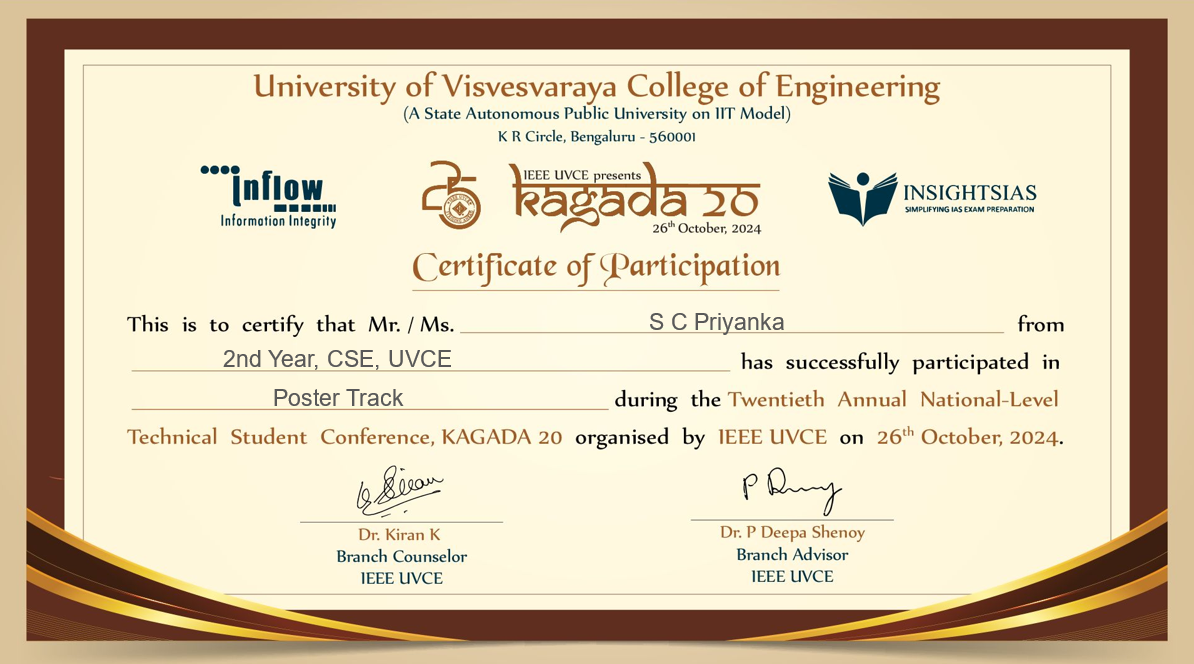
Task 15:Writing Resource Article using Markdown
I have written a an article on Artificial Intelligence.I have gained insights on characteristics,types,advantages,challenges,future scope of AI.
